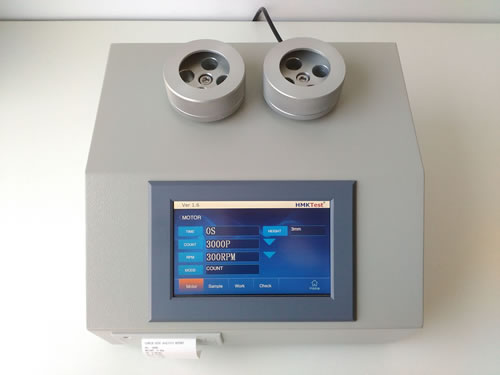301 What Factors Affect Bulk Density
What Factors Affect Bulk Density
HMK-22 Fisher Sub-sieve sizer Sub sieve sizer Average particle size analysis Supplier Price Manual
AS-300 Hall Flowmeter︱Flow Meter Funnel︱Metal Powder Flow Rate︱Apparent Density︱Carney︱Manufacturer
The bulk density depends on both the density of powder particles and the spatial arrangement of particles in the powder bed.
LABULK 0335 Tap Density Tester
-
Bulk Density of Soils and Factors Affecting It
After reading this article you will learn about the bulk density of soils and factors affecting it
Bulk Density of Soils:
Bulk density of soils is the weight of dry soil solid per unit volume of soil. This soil volume is the sum of the volume occupied by soil solids and volume occupied by air.


Factors Affecting the Bulk Density of Inorganic Soils:
(1) Texture:
Dry soils of a finer texture have more spaces filled with air around the mineral particles than those of a coarser texture. So the weight per unit volume of the soil is reduced. Thus a clayey soil in which soil particles are united to form soil aggregates have a lower Bulk Density than a sandy soil in which soil particles lie close to each other.
(2) Humus:
When organic matter decomposes to form humus in the soil, some organic compounds are formed, which bind the primary soil particles sand, silt and clay to form the soil aggregate. Pore space occurs within and between soil aggregates. So the weight of unit volume of soil decreases. Hence the bulk density of soils decreases when their percentage of humus increases.
(3) Soil depth:
Bulk density of surface soil is usually lower than that of the sub soil because surface soil contains more humus than sub soil. Plant roots present in the surface soil bind the soil particles to from soil aggregate, and therefore reduce the bulk density of the surface soil.
(4) Nature of crops:
The bulk density of soils decreases if grasses are grown, because the grass roots bind the soil particles to form soil aggregate. In addition, grasses add organic matter to the soil in the form of dead roots which decompose to form humus that binds the soil particles to forms more soil aggregates.
On the other hand, excessive amounts of cultivation required for growing arable crops like potato oxidizes soil humus and therefore destroys soil aggregates, which increase the bulk density of the soil. Hence bulk density of grassland soils is less than that of the arable land soils where crops like potato, maize etc. are grown.
The bulk density of sandy soils and clayey soils should be less than 1.4gms/cc and 1.2gms/cc respectively for optimum crop growth, soils having a bulk density of about 1.1gms/cc contain sufficient pore space to retain enough water and air for plant growth.
The bulk density of undisturbed soil is found by inserting a small metallic cylinder of convenient internal diameter and height, into the soil. The cylinder containing the soil core is then taken out, oven dried and weighed.

Example:
A metallic cylinder was introduced into the soil. Then it was taken out and the soil contained in it was oven dried and weight.
Determine the bulk density, pore space percentage, and void ratio of soil from the following data:

The soil seems to be finer texture because its percentage of pore space is more than 50 per cent.

